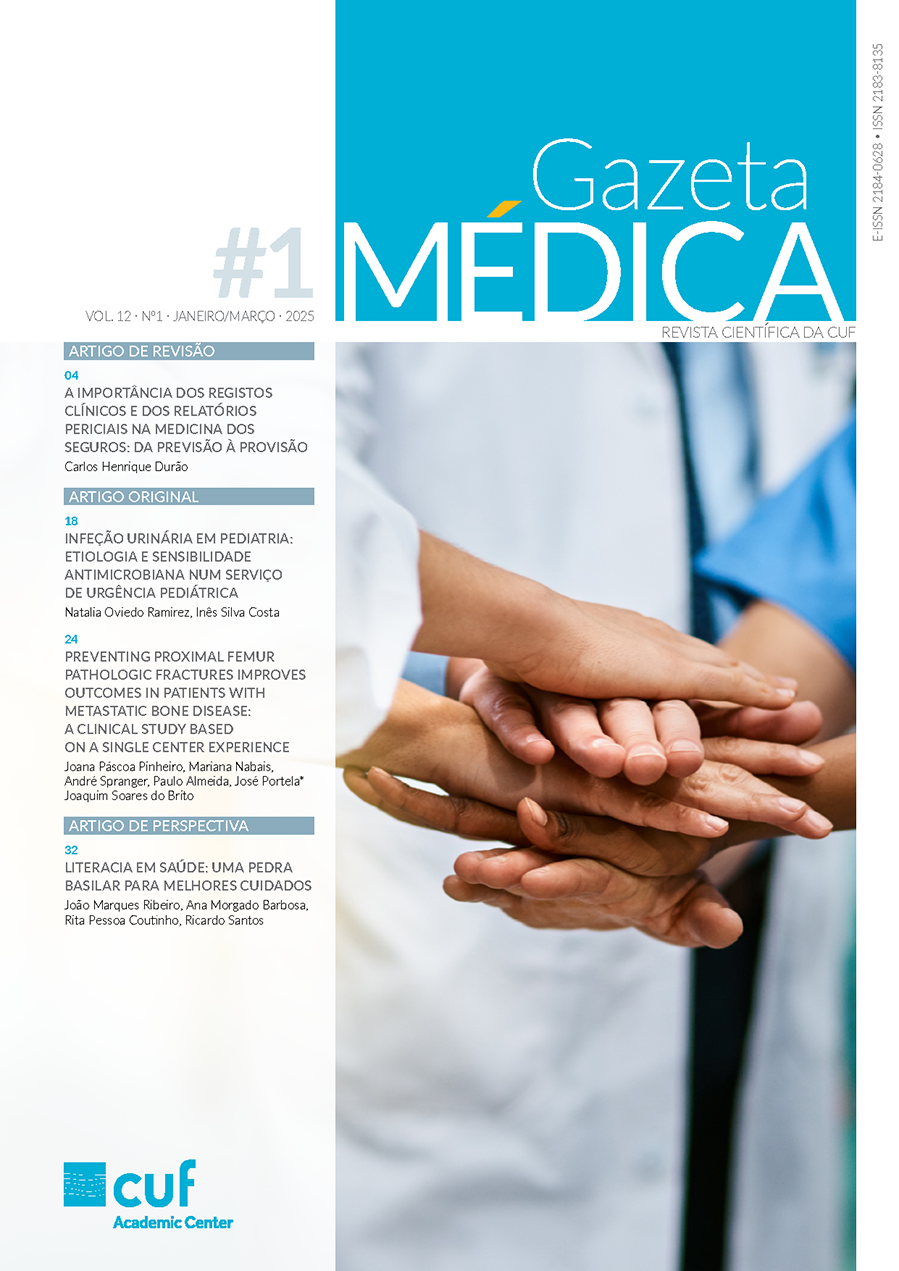Preventing Proximal Femur Pathologic Fractures Improves Outcomes in Patients with Metastatic Bone Disease: A Clinical Study Based on a Single Center Experience
Main Article Content
Abstract
INTRODUCTION: Metastatic bone disease decreases a patient’s function and increases morbidity being frequently found in patients with solid malignant tumors and multiple myeloma (MM). The effective treatment of these patients demands a multidisciplinary team approach to prevent catastrophic events such as pathologic fractures, especially in the proximal femur. This study aimed to evaluate oncologic outcomes, surgical complications, and associated healthcare costs in surgically treated patients with proximal femur bone metastases.
METHODS: Retrospective study (2017-2021) of patients with proximal femur bone metastases secondary to carcinomas or MM, where surgical treatment of that anatomic location was performed. Epidemiologic data, histology, surgical management, presence of pathologic fracture, length of stay and overall survival were evaluated based on clinical records. Data analyses were performed using SPSS 23.0.
RESULTS: Thirty-seven patients were identified, 20 male and 17 female. Nine patients had lung cancer metastases, eight had breast cancer metastases, seven had prostatic cancer secondary lesions, four presented uterine cancer secondary lesions, three cases were secondary to kidney cancer, and six patients had MM lesions. Twenty-nine patients presented pathologic fractures, while eight had an impending fracture. Twenty-six patients underwent osteosynthesis or conventional hemiarthroplasty/total hip arthroplasty, while an en bloc resection with megaprosthetic reconstruction was performed in the remaining 11 cases. Length of stay was longer for patients with pathologic fractures (p<0.05), with a better one-year overall survival (OS) for those with breast cancer metastases, those who underwent en bloc resection and those with impending fractures (p<0.05).
CONCLUSION: OS for patients with proximal femoral metastases seems to be influenced by primary tumor histology, type of surgical management and the presence of pathologic fracture at diagnosis. This evidence should encourage thorough periodic follow-ups to prevent pathologic fractures and achieve optimized outcomes.
Article Details

This work is licensed under a Creative Commons Attribution-NonCommercial 4.0 International License.



